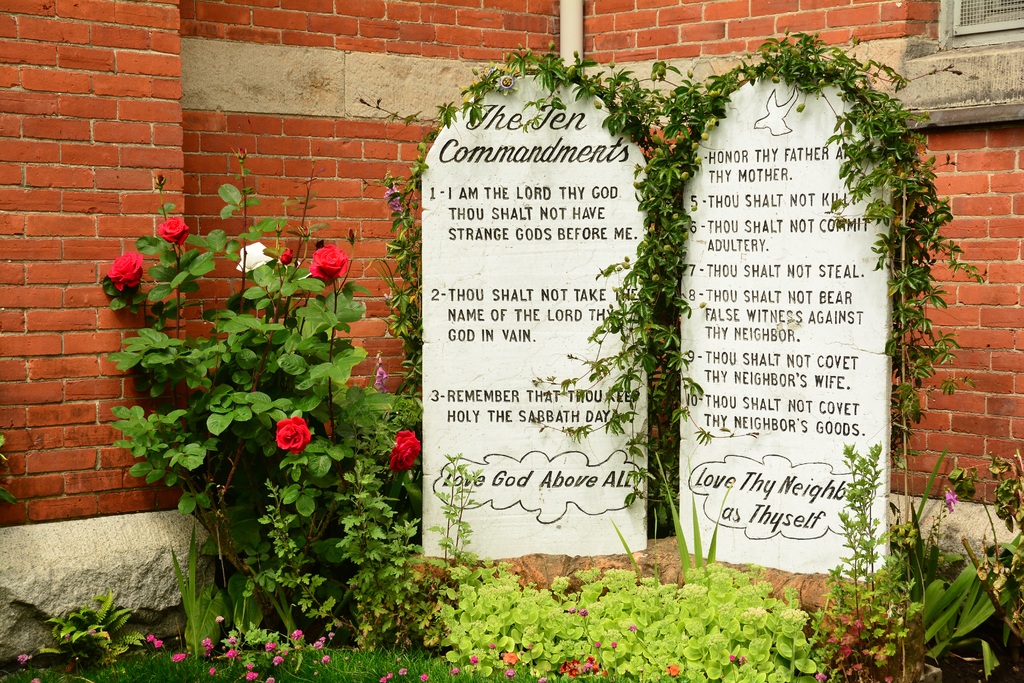As Paul nears the end of his argument, he deploys an allegory to make his point. “Tell me, you who want to be under law, do you not listen to the law? For it is written that Abraham had two sons, one by the bondwoman and one by the free woman. But the son by the bondwoman was born according to the flesh, and the son by the free woman through the promise. This is allegorically speaking, for these women are two covenants: one proceeding from Mount Sinai bearing children who are to be slaves; she is Hagar. Now this Hagar is Mount Sinai in Arabia and corresponds to the present Jerusalem, for she is in slavery with her children. But the Jerusalem above is free; she is our mother. For it is written, “Rejoice, barren woman who does not bear; Break forth and shout, you who are not in labor; For more numerous are the children of the desolate Than of the one who has a husband.” And you brethren, like Isaac, are children of promise. But as at that time he who was born according to the flesh persecuted him who was born according to the Spirit, so it is now also. But what does the Scripture say? “Cast out the bondwoman and her son, For the son of the bondwoman shall not be an heir with the son of the free woman.” So then, brethren, we are not children of a bondwoman, but of the free woman.” (Galatians 4:21–31, NASB95)
An allegory is a useful tool but can also be greatly misunderstood. To understand Paul’s allegory, we first need to consider the events from the book of Genesis it references. Abraham had a promise from God that his descendants would be as numerous as the stars in the sky and the sand by the sea. The problem is that he had no children. In Genesis 16 Abraham (still called Abram at this point) decides with his wife to use a surrogate mother, a slave from Egypt called Hagar. Hagar conceived and gave birth to a son named Ishmael. Abraham thought his problem was solved and God’s promise could be fulfilled. God, however, had other plans.
Thirteen years later God again appeared to Abraham. He reiterated the promise, expressed that the promise would be through Sarah and not Hagar. A bit later Sarah does conceive and gives birth to Isaac.
In the allegory, Paul connects the Law to Hagar, Ishmael, and slavery. And he connects Isaac to the promise and to freedom. Paul also indicates two Jerusalem’s, an earthly Jerusalem bound by the Law and a heavenly Jerusalem marked by its freedom.
To be honest Paul’s allegory is a bit confusing with its different parts and the strange overlap between historical reality and covenantal purposes. In a twisty kind of way, the fruit of Isaac is the Jewish Law that Paul is calling slavery while the descendants of Ishmael lived outside of the Jewish law. But the point is about covenants. A previous covenant based on the law established at Mount Sinai and a new covenant based on Christ. The former leading to a kind of slavery; the latter leading to freedom.
And that is Paul’s big question. Do you want to be a slave, or do you want to be free? Paul is hoping they choose freedom. It seems that we always arrive at the point of how we navigate what Paul is advocating. What does it mean to have freedom in Christ? What about the Law, given by God to Moses?
I think that answer lies in the Parable of the Good Samaritan (Luke 10:30-37). In the story, the priest and the Levite seem to be prevented from helping due to the constraints of the Law and religious expectations. But the Samaritan, not being under the Law, was free to help the man left beaten by robbers. The freedom Paul is advocating in Galatians is one of acting with love and compassion in the world. It will be a few weeks before we get there, but Paul identifies the “fruit” of freedom this way – “But the fruit of the Spirit is love, joy, peace, patience, kindness, goodness, faithfulness, gentleness, self-control; against such things there is no law.” (Galatians 5:22–23, NASB95)
- Mark: An Insignificant Seed - June 4, 2025
- Mark – Listen Carefully - June 2, 2025
- Mark: Consider the Sower - May 28, 2025




